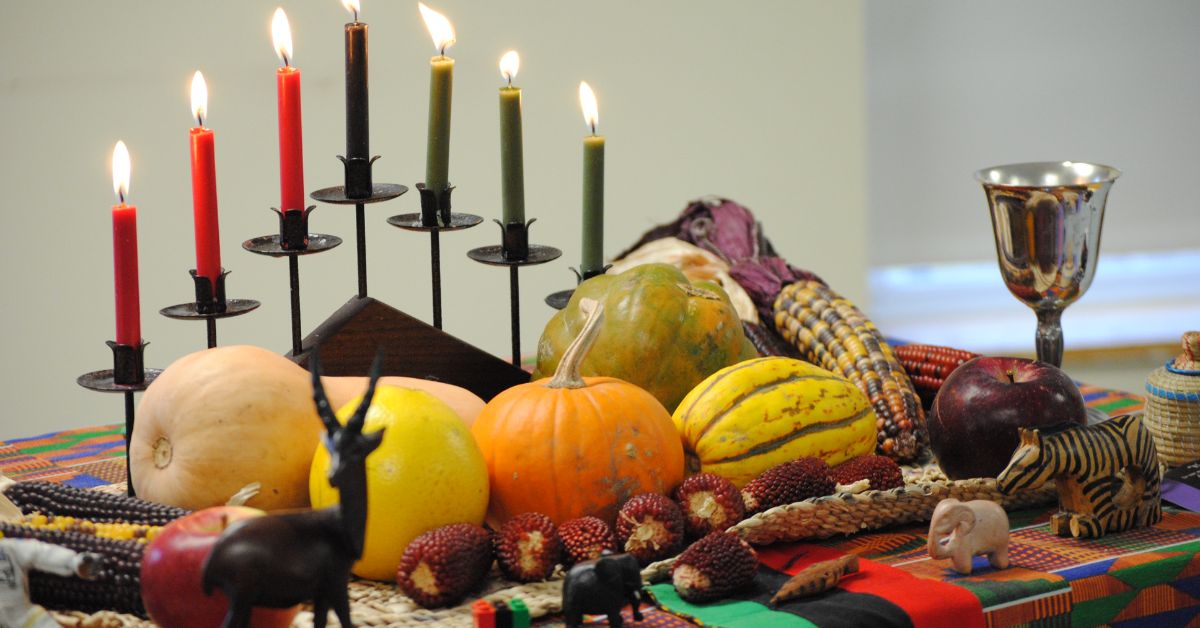Kwanzaa is a holiday that lasts for a week and celebrates African American heritage and culture. It falls between Christmas, the last day of Hanukkah, and New Year’s Day.
The holiday has been celebrated for seven days since the 1960s, making it relatively new. On each day of Kwanzaa, people celebrate the “Nguzo Saba,” which means the “seven principles” of African culture in Swahili.
People who celebrate Kwanzaa get together with their families and communities for a feast to honor their ancestors and to celebrate African and African American culture.
Here is all the information you need about Kwanzaa.
What is Kwanzaa?
Kwanzaa is a seven-day celebration of African and African American culture and history every year from December 26 to January 1. In 1966, an African-American professor of Africana studies at California State University named Maulana Karenga made it.

Karenga wanted to find a way for African Americans to get together and discuss their culture.
Kwanzaa comes from the Swahili phrase matunda ya kwanza, which means “first fruits.” Swahili is spoken in Kenya, Uganda, Tanzania, Mozambique, and Zimbabwe, among other places.
Karenga named the tradition in Swahili because it is the language that most people who celebrate pan-Africanism speak. Pan-Africanism is the idea that Black people worldwide feel a sense of unity and work to restore the African continent and themselves against racism and oppression.
Karenga looked into African harvest celebrations and took parts from many of them, like those of the Ashanti and the Zulu, to create the basis for Kwanzaa. The Courier-Journal has said that it comes from the tradition of people celebrating and giving thanks for the good things in their lives and communities.
Latest Post
What Is The Kinara?
The kinara has seven candles. The Mishumaa Saba comprises three red candles on the left and three green candles on the right, with an African flag-shaped black candle in the middle.
During Kwanzaa, just like during Hanukkah, a candle is lit every night. First, the black candle is lit, then the red and green candles are lit in turn, starting with the ones on the outside and working their way in.
During Kwanzaa celebrations, people often sing and dance, tell stories, read poems, play African drums, and eat. Even though the official festival lasts seven days, the main ideas are meant to be used daily. The seven guiding principles of Nguzo Saba are intended to be reinforced over the course of a week.
What Is Nguzo Saba In Kwanzaa?
Kwanzaa teaches seven principles, and each day of the holiday is a time to honor and celebrate them:
Day 1: Umoja (Unity): Unity of the family, community, nation, and race.
Day 2: Kujichagulia (Self-Determination): Being responsible for your actions and behavior.
Day 3: Ujima, which means working together to help each other and the community.
Day 4: Ujamaa means working together to build shops and businesses. Many people who celebrate Kwanzaa will shop at Black-owned stores.
Day 5: Nia (Purpose): Remembering and restoring African and African American cultures, customs, and history.
Day 6: Kuumba (Creativity): To do always as much as we can, in the way we can, to leave our community more beautiful and helpful than we found it.
Day 7: Imani (Faith): Believing in people, families, leaders, teachers, and the rightness of the African American struggle.
What Are other Kwanzaa symbols?
Kwanzaa is often associated with corn and other crops. Here are what the other symbols of Kwanza mean:
Mkeka: A woven mat made of fabric, raffia or paper. The other symbols are placed on the Mkeka. It symbolizes experiences and foundations
Kikombe cha Umoja: The unity cup represents family and community. It is filled with water, fruit juice or wine. A little is poured out to remember the ancestors. The cup is shared between people and each person takes a sip.
Mazao: The crops from the harvest. These normally include bananas, mangoes, peaches, plantains and oranges.
Muhindi: The corn. There is one ear of corn for each child in the family. If there are no children in the family, then one ear is used to represent the children in the community.
Zawadi: Gifts given to children during Kwanzaa are normally educational or handmade, often to remind them of their African heritage.
Kente cloth: A brightly colored material, usually red, green and yellow print, for clothing items.
Stay tuned to our website NogMagazine.com for more related updates.